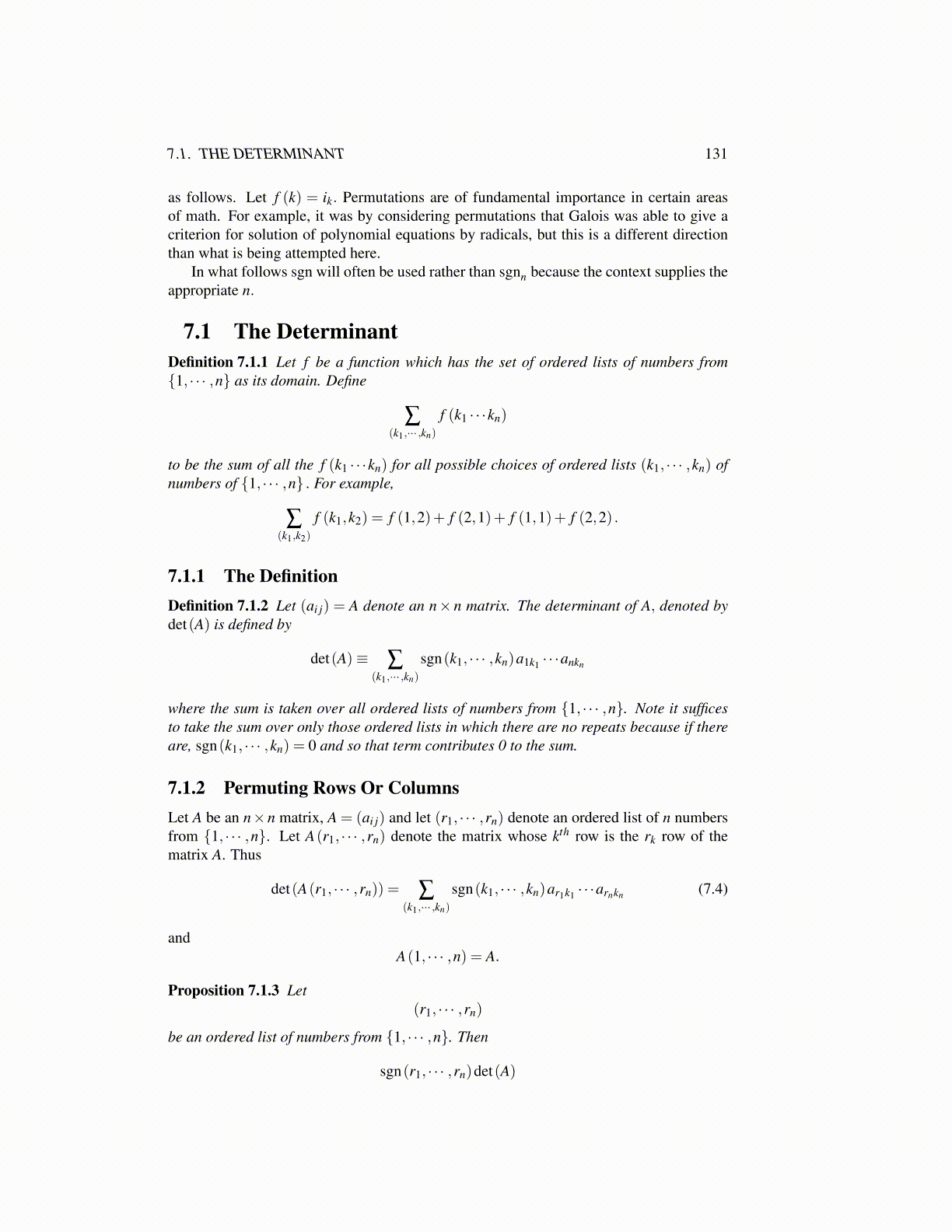
7.1. THE DETERMINANT 131
as follows. Let f (k) = ik. Permutations are of fundamental importance in certain areasof math. For example, it was by considering permutations that Galois was able to give acriterion for solution of polynomial equations by radicals, but this is a different directionthan what is being attempted here.
In what follows sgn will often be used rather than sgnn because the context supplies theappropriate n.
7.1 The DeterminantDefinition 7.1.1 Let f be a function which has the set of ordered lists of numbers from{1, · · · ,n} as its domain. Define
∑(k1,··· ,kn)
f (k1 · · ·kn)
to be the sum of all the f (k1 · · ·kn) for all possible choices of ordered lists (k1, · · · ,kn) ofnumbers of {1, · · · ,n} . For example,
∑(k1,k2)
f (k1,k2) = f (1,2)+ f (2,1)+ f (1,1)+ f (2,2) .
7.1.1 The DefinitionDefinition 7.1.2 Let (ai j) = A denote an n× n matrix. The determinant of A, denoted bydet(A) is defined by
det(A)≡ ∑(k1,··· ,kn)
sgn(k1, · · · ,kn)a1k1 · · ·ankn
where the sum is taken over all ordered lists of numbers from {1, · · · ,n}. Note it sufficesto take the sum over only those ordered lists in which there are no repeats because if thereare, sgn(k1, · · · ,kn) = 0 and so that term contributes 0 to the sum.
7.1.2 Permuting Rows Or ColumnsLet A be an n×n matrix, A = (ai j) and let (r1, · · · ,rn) denote an ordered list of n numbersfrom {1, · · · ,n}. Let A(r1, · · · ,rn) denote the matrix whose kth row is the rk row of thematrix A. Thus
det(A(r1, · · · ,rn)) = ∑(k1,··· ,kn)
sgn(k1, · · · ,kn)ar1k1 · · ·arnkn (7.4)
andA(1, · · · ,n) = A.
Proposition 7.1.3 Let(r1, · · · ,rn)
be an ordered list of numbers from {1, · · · ,n}. Then
sgn(r1, · · · ,rn)det(A)